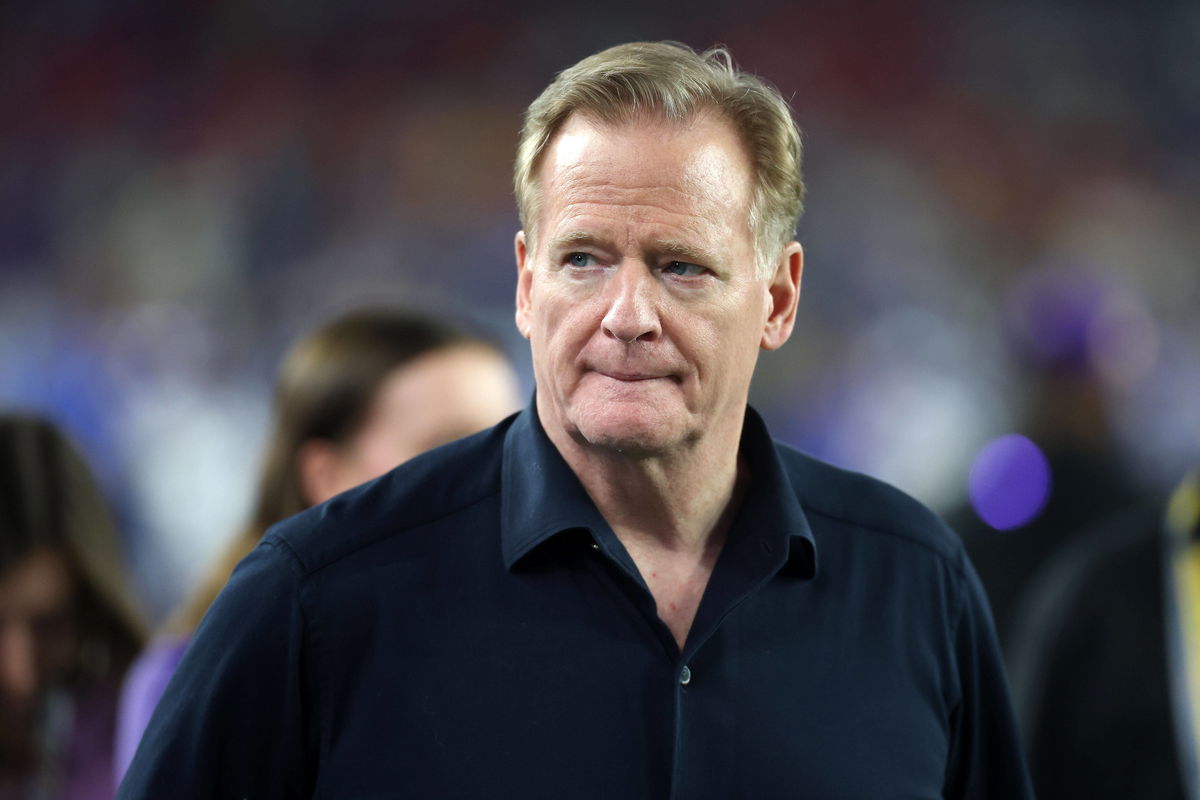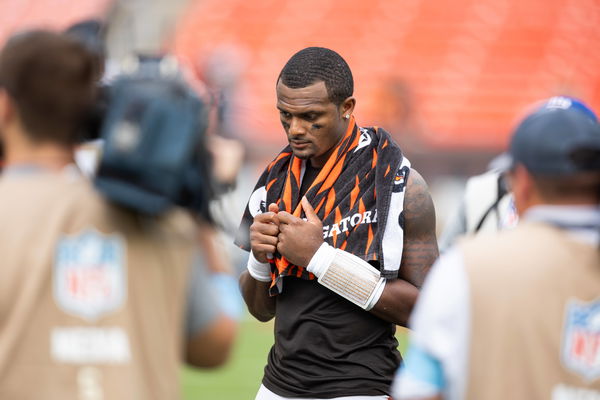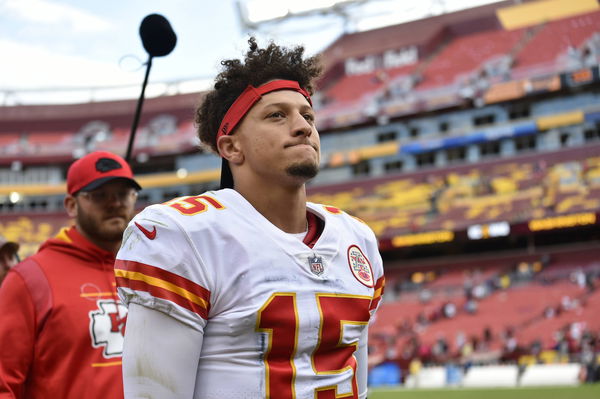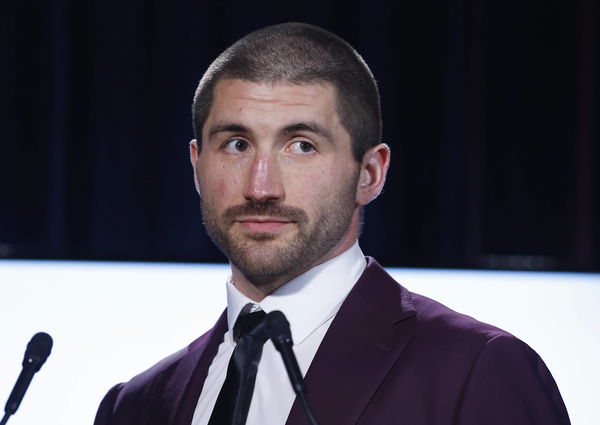
Imago
NFL, American Football Herren, USA NFC Wild Card Round-Minnesota Vikings at Los Angeles Rams Jan 13, 2025 Glendale, AZ, USA NFL commissioner Roger Goodell before the NFC wild card game between the Los Angeles Rams and the Minnesota Vikings at State Farm Stadium. Glendale State Farm Stadium AZ USA, EDITORIAL USE ONLY PUBLICATIONxINxGERxSUIxAUTxONLY Copyright: xMarkxJ.xRebilasx 20250113_mcd_su5_11

Imago
NFL, American Football Herren, USA NFC Wild Card Round-Minnesota Vikings at Los Angeles Rams Jan 13, 2025 Glendale, AZ, USA NFL commissioner Roger Goodell before the NFC wild card game between the Los Angeles Rams and the Minnesota Vikings at State Farm Stadium. Glendale State Farm Stadium AZ USA, EDITORIAL USE ONLY PUBLICATIONxINxGERxSUIxAUTxONLY Copyright: xMarkxJ.xRebilasx 20250113_mcd_su5_11
Let’s play a dangerous game of what-if. What if Shohei Ohtani tore his UCL tomorrow? His $700 million is still coming. What if Nikola Jokić blew out a knee? Denver still pays up. But if a top NFL running back breaks his ankle in Week 1? He could lose his job and half his paycheck.
Watch What’s Trending Now!
This is the cold math of America’s three major player unions. The MLBPA fights like a courtroom pit bull and wins ironclad guarantees. The NBPA builds control through structured freedom and leverage. The NFLPA? It survives. Sometimes. If a player’s lucky. But surviving in the NFL doesn’t mean protection. It just means not being cut yet.
Three unions. Three worlds. And one of them remains structurally broken.
ADVERTISEMENT
NFL players live on a financial cliff. Their careers last an average of 3.3 years. Not only are most contracts non-guaranteed or partially fake, but teams can also cut players without warning, even over minor injuries. Meanwhile, their MLB and NBA peers stack generational wealth on contracts signed with real protection. The average MLB player earns over $4 million per year with full guarantees. NBA players pull in roughly $9.6 million, again mostly guaranteed. NFL players earn approximately $2.7 million, with only a fraction of their earnings locked in.
Accordingly, it’s time to examine why the gap is so wide and what must change if the next generation hopes to gain lasting control over its labor rights.
ADVERTISEMENT
Watson’s contract mess revealed the hidden collusion
When Deshaun Watson signed his $230 million fully guaranteed deal with the Browns in 2022, it looked like a pivot point. At first, many assumed the market would follow suit. After all, if one quarterback could secure a full contract, then surely others would too. Instead, owners revolted.
The 2025 arbitration ruling confirmed the worst fears. NFL owners had conspired to prevent another Watson-style deal. Arbitrators revealed that league counsel Jeff Pash and Commissioner Roger Goodell encouraged teams to be cautious. They didn’t just push back informally. They built a silent wall to stop guaranteed quarterback deals in their tracks.
ADVERTISEMENT
If that weren’t enough, the NFLPA signed a nondisclosure agreement, choosing silence over advocacy. Players found out not from their agents or representatives, but from headlines. After all of that, the very union designed to protect them kept quiet.
Compare that with MLB’s past. In the 1980s, when baseball owners coordinated to suppress free agency, the MLBPA sued and won a $280 million settlement. That legal victory laid the foundation for every guaranteed deal since. For example, when Aaron Judge inked his $360 million extension or Bryce Harper signed his $330 million deal, the guarantees came built-in. No negotiation tricks. No backdoors. Just financial truth.

Imago
NFL, American Football Herren, USA New York Giants at Cleveland Browns Sep 22, 2024 Cleveland, Ohio, USA Cleveland Browns quarterback Deshaun Watson 4 after the game against the New York Giants at Huntington Bank Field. Cleveland Huntington Bank Field Ohio USA, EDITORIAL USE ONLY PUBLICATIONxINxGERxSUIxAUTxONLY Copyright: xScottxGalvinx 20240922_sns_bg7_00312
Shohei Ohtani’s $700 million deal, though heavily deferred for tax reasons, still guarantees him the full sum, even as he recovers from elbow surgery. In MLB, collusion is met with legal firepower. In the NFL, it was met with nods and silence.
ADVERTISEMENT
Similarly, the NBA enforces structure with leverage. Nikola Jokić’s $276 million supermax, LeBron James’ guaranteed extensions, and Jayson Tatum’s new $315 million deal all stand fully protected. Even players like Ben Simmons, despite injury issues and a form collapse, continue to draw their full salary under guaranteed contracts.
Meanwhile, Lamar Jackson, a unanimous MVP and just 28 years old, struggled to secure $185 million guaranteed. Not because of his value. But because of the league’s coordinated resistance.
ADVERTISEMENT
If that’s not collusion, then what is?
The guarantee gap, and why structure matters
NFL contracts look impressive at a glance. However, once the ink dries, the money starts fading. Teams backload deals and lace them with incentives that can disappear in an instant.
ADVERTISEMENT
Consider Patrick Mahomes’ 10-year, $450 million contract. Only $141 million was guaranteed. That’s about 31%. Although he won two MVPs and three Super Bowls by 2025, his guaranteed money still trails far behind less-decorated MLB or NBA stars.

Imago
LANDOVER, MD – OCTOBER 17: Chiefs quarterback Patrick Mahomes 15 walks off the field after the Kansas City Chiefs versus Washington Football Team National Football League game at FedEx Field on October 17, 2021 in Landover, MD. Photo by Randy Litzinger/Icon Sportswire NFL, American Football Herren, USA OCT 17 Chiefs at Washington Football Team Icon9662110171488: Image Credits: Imago
In contrast, Mike Trout signed a $426 million fully guaranteed deal in 2019. Despite missing over 200 games due to injury, he keeps every dollar. Mookie Betts’ $365 million Dodgers deal also ensures every cent. Neither player has to worry about getting cut. No fear of one freak injury ending their earning window.
ADVERTISEMENT
Take Kirk Cousins. He became the NFL’s model for short-term, fully guaranteed deals. He signed three in a row. But even so, they only lasted two or three years each. Not the seven to ten-year guarantees seen elsewhere. And certainly not the long-term protections built into MLB or NBA structures.
Dak Prescott’s $231 million guaranteed came only after years of betting on himself with franchise tags. He took the hits. Then got paid. But that’s the exception, not the rule.
Consider Saquon Barkley. Drafted No. 2 overall. Carried the Giants offense. Tore his ACL. And still, after all that, he landed a one-year, $11 million prove-it deal in 2023. In 2024, he signed with the Eagles on a short, multi-year contract well below his expected value. Now, after winning Super Bowl LIX, he got a 2-year $41.2 million deal, with $36 million guaranteed.
ADVERTISEMENT
Michael Thomas signed a $96 million deal with the Saints. Injuries followed. Guarantees vanished. He barely saw half of what he signed for.
Meanwhile, NBA players like Malcolm Brogdon and Tyler Herro inked guaranteed deals despite health issues. Even journeymen like Norman Powell, Doug McDermott, Joe Harris, Davis Bertans, and Gary Trent Jr. sign three or four-year contracts with full guarantees. They’re not MVPs. Yet they enjoy protection that most NFL starters only dream about.
In the NFL, even Pro Bowlers like Dalvin Cook and DeAndre Hopkins face sudden cuts, no backup plan, and little guaranteed cash to fall back on.
Altogether, the guarantee gap is more than unfair. It’s existential.
What the NFLPA must learn, before it’s too late
The NFLPA doesn’t lack resources. It lacks resolve. What’s more, it lacks urgency. The MLBPA earned its power through legal grit. The NBPA built its leverage through policy and structure. The NFLPA needs both, now.
Stop the secrecy, start the fight. First, abolish NDAs that hide collusion. The Watson arbitration should have triggered immediate lawsuits and emergency action. Instead, players were left blind. Transparency protects players. Silence protects owners.
Furthermore, the NFLPA must tell better stories. Highlight player sacrifices. Expose shady practices. Own the narrative. When fans understand what’s at stake, pressure follows. After all, public perception shapes leverage.
Demand contract tools that actually work. NFL players deserve opt-outs, no-trade clauses, and guaranteed injury protection. The NBA provides player options. MLB guarantees salaries and even adds ten and five rights. The NFL offers none of this unless a player negotiates it from scratch.
The next CBA must include basic structural reforms.
- Minimum 50% guarantee on veteran deals over $10 million
- Mandatory trade veto after eight years of service
- Injury protection clauses through Year 3 for all rookie deals
- Annual salary cap growth tied directly to media rights revenue
These are not luxury features. They are standard in other leagues. The NFLPA must insist on parity.

Imago
NFLPA President JC Tretter speaks at the National Football League Players Association press conference, PK, Pressekonferenz leading up to Super Bowl LVIII at the Mandalay Bay Convention Center in Las Vegas, Nevada on Wednesday, February 7, 2024. The San Francisco 49ers will play the Kansas City Chiefs in Super Bowl LVIII at Allegiant Stadium in Las Vegas, Nevada on Sunday, February 11, 2024. PUBLICATIONxINxGERxSUIxAUTxHUNxONLY SBP20240207117 JohnxAngelillo
Build intelligence, not just identity. Each rookie class must learn contract literacy, negotiation tactics, and union strategy. At present, too many players rely solely on agents. Some agents work too closely with teams. The players lose.
Organize by position group. Running backs could align on holding out until their contracts include injury escalators. Offensive linemen could form lobbying units for better bonus protection. All in all, group leverage works.
Prepare for 2030, or be forgotten. The current collective bargaining agreement expires in 2030. If the NFLPA wants a real seat at the table, it must start preparing now. Build a strike fund. Hire legal firepower. Design a narrative. Rally fans with a clear message, such as: We play the most dangerous sport. We deserve the most secure pay.
Back in 2011, NFL players backed down. They negotiated late, fractured under pressure, and settled for crumbs. It cannot happen again. Today’s players are more media-savvy, more unified, and more aware. They know Deshaun Watson’s deal didn’t spark a movement, owners conspired to stop it, and their own union stayed quiet.
And now, they also know what happens when labor power is delayed. If the NFLPA fails to evolve, then no sooner will a player get paid than he’ll get cut. Eventually, the fight for guarantees will define the NFL’s next era. That much is certain.
ADVERTISEMENT
ADVERTISEMENT
ADVERTISEMENT

